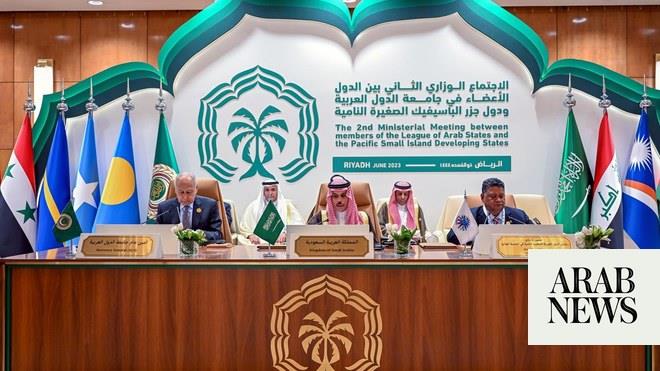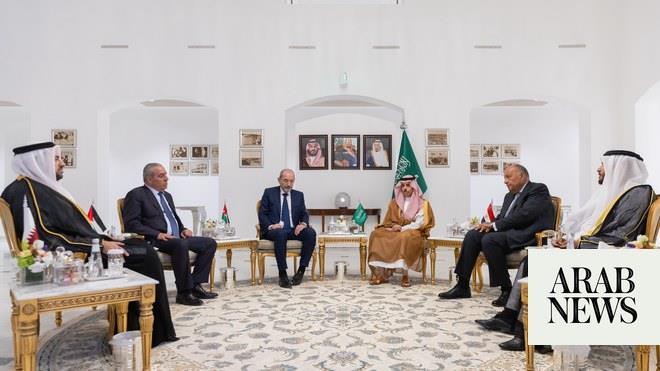
The Saudi Ministry of Industry and Mineral Resources, in collaboration with the Arab Industrial Development, Standardization and Mining Organization (AIDSMO), will hold Tuesday the 8th Consultative Meeting of Arab Ministers for Mineral Resources.
The meeting is a vital part of the first-ever Future Minerals Summit in Riyadh from January 11 to 13.
Saudi Minister of Industry and Mineral Resources Bandar Alkhorayef will inaugurate the meeting in the presence of all Arab ministers of industry, energy, oil, and mining.
The schedule
The meeting will discuss the activities of AIDSMO in the mineral resources sector during the period between the seventh and eighth consultative meetings of ministers.
It will also review the Organizations main achievements in implementing the recommendations of the ministers, most notably relating to the database of mining raw materials in Arab countries and establishing Arab capabilities in the mining sector.
According to the agenda, the ministers are expected to discuss the draft of preparing mining guidelines for Arab countries, the Arab Initiative for metals used in clean energy technologies, the Arab industrial and mining products orders, and setting the date and place of the ninth consultative meeting.
International conference
Through the Future Minerals Summit, Saudi Arabia provides an excellent opportunity for the region rich in untapped minerals, covering the area from Congo to Kyrgyzstan.
The Summit, the largest of its kind in the Middle East, is an opportunity for to establish an international and regional hub qualified to plan and cooperate in the field of mineral wealth exploitation, develop investment opportunities throughout the Middle East, Central Asia, North, and East Africa, ensure a resilient mineral supply chain, and grow a sustainable mining industry.
It is considered the most prominent attraction that qualifies the Kingdom to take the lead, as the most significant regional economic power and the only Middle Eastern Arab member state of OPEC and G20. The government is implementing megaprojects to support and develop the mining industry, and empower it in organizational and construction aspects.
Arabian Shield
The Arabian Shield, in western Saudi Arabia, boasts $1.3 trillion worth of rare untapped mineral deposits, including a group of minerals and metals many of which are necessary for technologies that will be in high demand in the future.
Future demand for copper and rare earth metals is predicted to increase by 40 percent in the coming years.
Saudi Geological Survey reports indicate that the Precambrian rocks are found in the western part of Saudi Arabia, which constitutes a geologically interesting and significant terrain in the Arabian Shield.
The Arabian Shield is part of a larger geological group, the Arabian Nubian Shield, which covers mainly Egypt, Eritrea, Ethiopia, Saudi Arabia, Somalia, Sudan, and Yemen.
Of the 54 countries on the continent, 20 are considered by the International Monetary Fund (IMF) as rich in natural resources.
The countries whose natural resources account for more than 25 percent of total exports are sub-Saharan African countries: seven states export mainly oil and gas, and the remaining 13 export mainly minerals: mostly gold, diamonds, and precious stones.
Saudi mining
As an essential part of Vision 2030, the Kingdom is pushing its mining sector to become the third pillar of the national economy, based on its long history and aspiration to attract investment and develop its multiple mineral resources.
The Kingdoms mining strategy seeks to increase its contribution to the gross domestic product to $64 billion, state revenues to $3.7 billion, and generate about 220,000 new jobs by 2030.
Level of expectations
The level of expectations increased concerning the vital role of mining companies in protecting the environment, contributing to the development of societies, and acting with transparency, integrity, and responsibility.
Using technologies that guarantee the protection of the environment and the development of societies are significant themes during the conference sessions and discussions with the participation of ministers, investors, and the most prominent regional and international leaders in the sector.
Possible changes
The growing expectations of local communities and governments towards mining companies have brought significant change. International investors are increasingly basing their investments on companies that comply with the environmental, social, and governance (ESG) ratings.
Mining companies with higher ESG ratings outperformed the broader market during the peak of the Covid-19 crisis, delivering 34 percent average total shareholder return over the past three years, ten percentage points higher than the general market, according to PwC.
Companies with higher ESG ratings are demonstrating more robust long-term performance in shareholder and market value, benefiting from capital access at lower interest rates, and attracting premiums on low-carbon inputs.
Sustainability is a principle
Saudi Arabia has placed great emphasis on sustainability in every step of its plan to develop the mining sector.
Sustainability has been placed at the heart of labor laws and requirements in this sector by the new mining investment system, which was established according to the best international practices.
It provides clear commitments on managing mines and maintaining peoples health working and living around mining projects. Investors are required to submit annual sustainability reports.
The Kingdom stressed that all countries should cooperate to create a balanced, transparent, and sustainable legal system that achieves the interests of all parties involved in mining projects.
Mining
In 2021, the Kingdom launched the Saudi Green Initiative, taking the lead in scaling climate action and environmental protection and adopting a plan that contributes to making the world greener.
The Initiative reduces carbon emissions through renewable energy projects, carbon sequestration initiatives, and full support for energy efficiency in the industry.
The mining industry is estimated to be responsible for four to seven percent of global greenhouse gas emissions.
A report issued by McKinsey Group predicted the role of mining companies in decarbonization, noting that significant growth would occur in low-carbon technologies if industries commit to reducing emissions in line with the goals of the Paris Agreement.
If this goal is achieved, it will manifest in decarbonization across industries, creating significant shifts in commodity demand for the mining industry and likely resulting in declining global mining revenue pools.
Technologies that support decarbonization include wind turbines, solar photovoltaics, electric vehicles, energy storage, metal recycling, hydrogen fuel cells, and carbon capture and storage.
"The mining industry will be part of the decarbonization solution by providing the raw materials needed for these technologies," said the report.
McKinsey expects bauxite, copper, and iron ore to see growth from new decarbonization technologies offset by increased recycling rates due to the growing circular economy and focus on metal production from recycling versus virgin ore.
"The mining industry will be part of the decarbonization solution by providing the raw materials needed for these technologies. Simultaneously, their growth will alter demand patterns for upstream mining commodities," it added.
Biodiversity
Water scarcity is the most significant emerging risk in the metals and mining sector. In 2018, drought conditions forced a German company to shut two mining locations in the RDM gold mine in Brazil.
The International Council on Mining and Metals (ICMM) warned that water scarcity affects every continent, hindering environmental stewardship and sustainable social progress.
Mckinsey explained that climate science indicates that these hot spots will worsen in the coming decades. In Chile, 80 percent of copper production is already located in extremely high water-stressed and arid areas; by 2040, it will be 100 percent.
Community development
The World Economic Forum also explained that the mining industry plays a critical role in supporting mining communities.
Furthermore, mining companies acknowledge that they face a lack of trust from local communities, among other significant risks.









